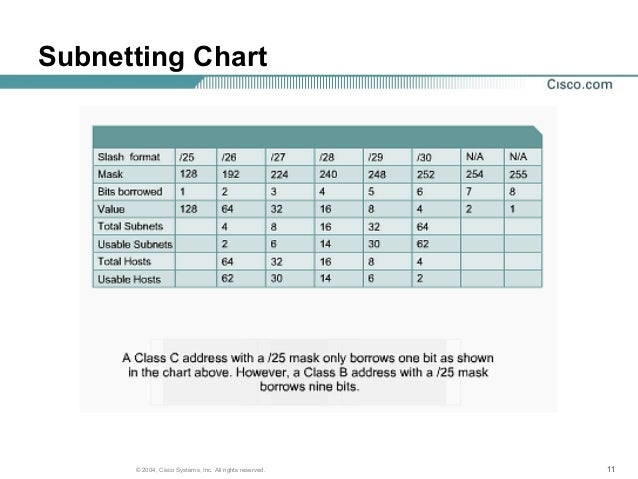

So, in the above example of the Class C IP address, we represent all the network ID bits by 1.
CLASS C SUBNET MASK TABLE SERIES
See RFC 1878 from the Network Working Group. Ænetwork address 131.175.0.0 Ænatural mask 255.255.0.0 ÎSubnetted with /24 network prefix 1 0 NET ID (14bit) SUBNET ID (8 bit) HOST ID (8 bit) Ö255.255.255.0 subnet mask Ösubnet ID third number in dotted notation Æ131.175.21. A subnet mask is 32 bits numbers in which the series of 1’s represents the Network ID part and the Subnet ID part whereas the series of 0’s represents the Host ID part. The following tables include subnetting for Class A, B, and C networks, as well as Network IDs, host ranges and IP broadcast addresses with emphasis on Class C subnets. There are 3 classes that we can use while assigning IP Address: Class A, Class B and Class C. In subnetting we convert host bits into network bits. In subnet mask all 1s are Network Bits and all 0s are Host bits.

The four bits added to the network part from the host part, in the last octet, can have sixteen possible values. Here is a class C example demonstrating everything. Subnet mask is used to separate Network and Host portion of an IP address. Supernetting Class C 4-bit subnetting If we include four bits from the host part to the network part in the last octet, the default subnet mask of Class C network 255.255.255.0 is changed to 255.255.255.240. IPv4 Subnet Masks have variable lengths and can use various designations for different Class networks A, B & C. To change a host bit to a network bit, the subnet mask must be changed.


 0 kommentar(er)
0 kommentar(er)
